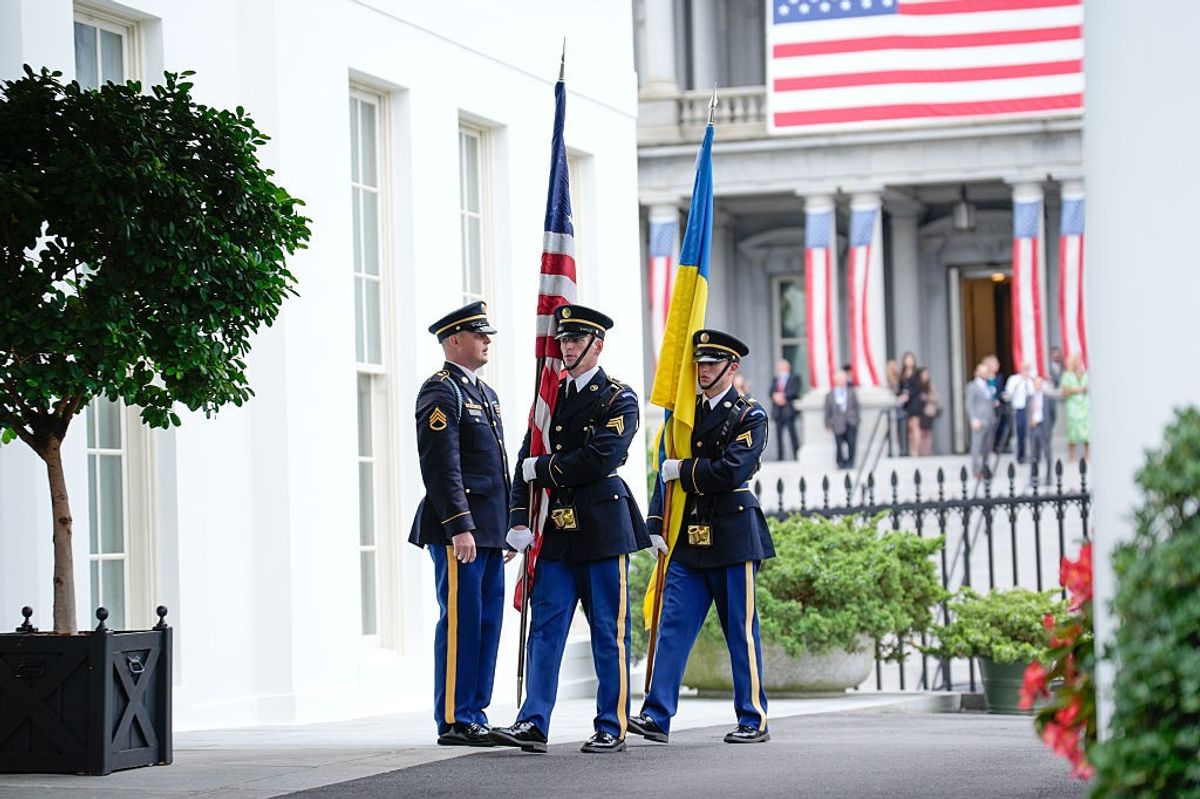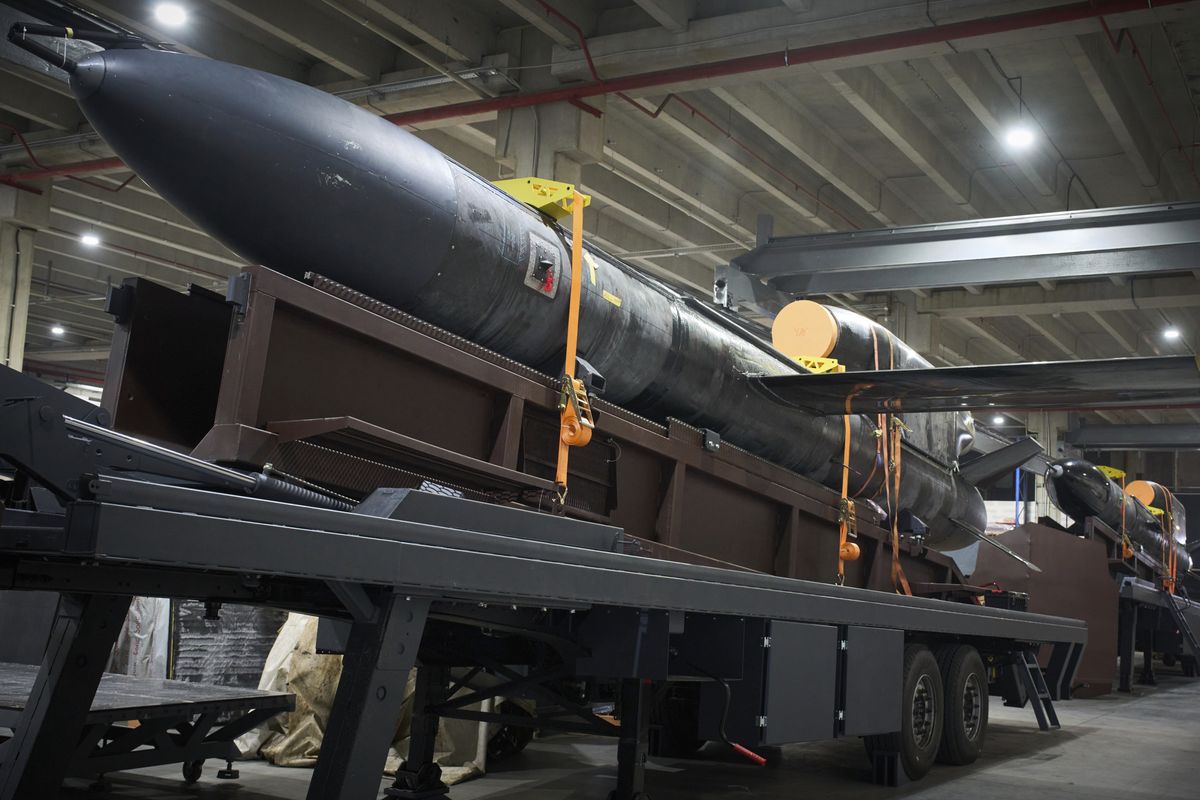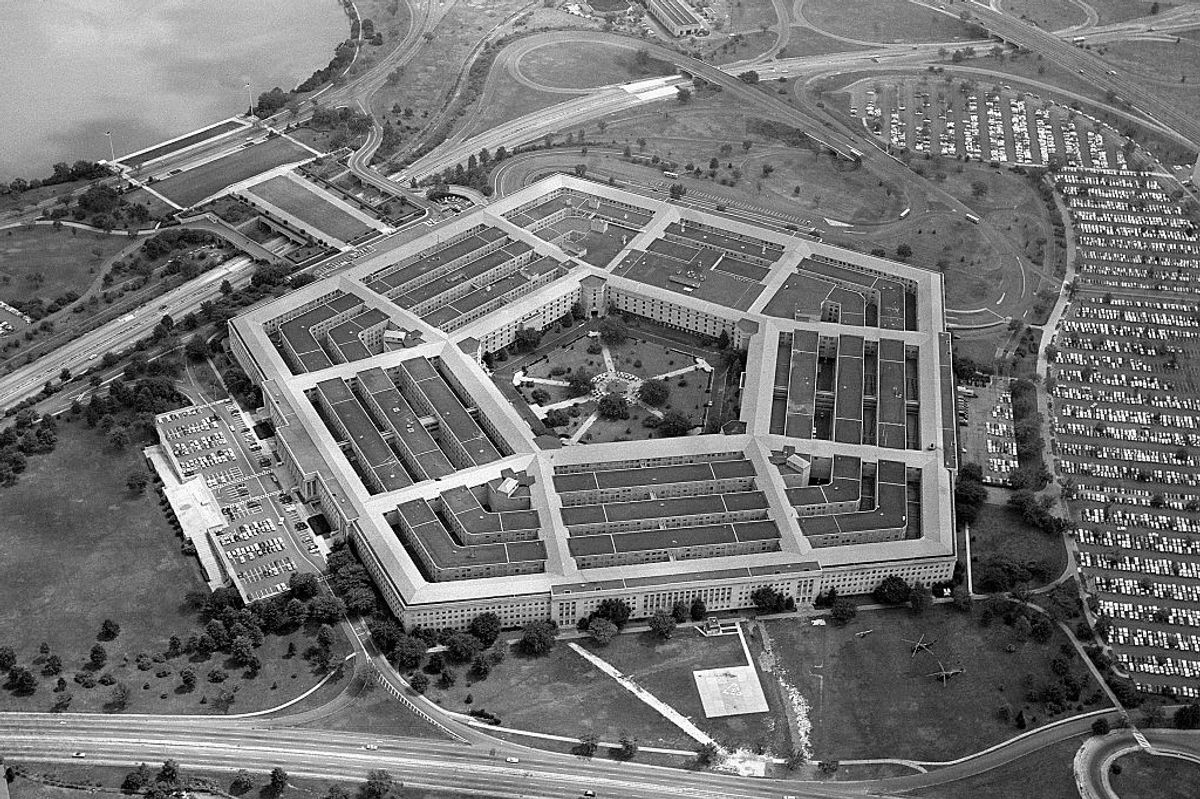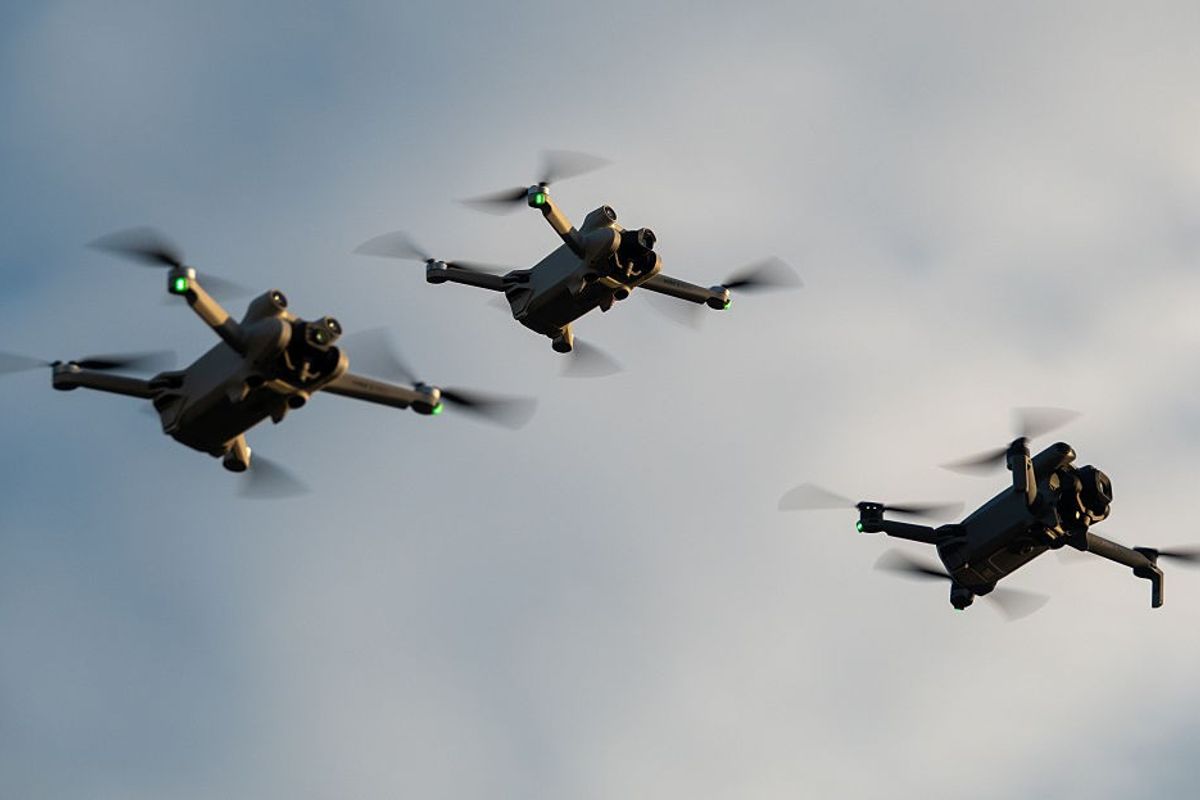OPINION — “The {Senate Appropriations] Committee recommends increases for [fiscal 2026 Defense Department (DoD)] programs and initiatives that are oriented to addressing these growing threats and requirements shortfalls -- including, but not limited to, munitions production, drone and counter-drone technology, air and missile defense, development of next-generation weapons platforms, shipbuilding, security cooperation with key allies and partners, and other priorities identified in military service and combatant command unfunded priorities lists.”
That is part of the opening section of the Senate Appropriations Committee report on the fiscal 2026 Defense Appropriations Bill, released on July 31, after the legislation passed the committee by an overwhelming, bipartisan, 26-to-3 vote.
The Committee’s recommendation of $852.5 billion is $21.7 billion above President Trump’s budget request. I will discuss specific items below.
But first I must say that I have not recently read a committee report covering broad defense issues that so often takes issue with Pentagon decisions.
For example, the Committee members complained about “the late and incomplete submission of the fiscal year 2026 President’s budget request [which] materially impacted the ability of Congress to provide for the Department of Defense’s stated requirements.”
The Senators also questioned why “the Executive Branch divided the President’s budget request for the Department of Defense into a discretionary request and a mandatory request,” saying that approach “risks creating unnecessary funding cliffs, misalignments, and uncertainties.”
In what could be read as a criticism of Defense Secretary Pete Hegseth, the report noted that “in some cases, the budget justification documents and briefings provided by the Department were incomplete, inadequate, and inconsistent with long-standing practices and procedures.”
In fact, the Committee report said that since the One Big Beautiful Bill (Reconciliation Act for funding fiscal 2025) was signed on July 4, the Committee has received a supplementary unfunded priorities list from the DoD totaling $9.5 billion identifying significant shortfalls in major procurement programs that were neither addressed under reconciliation nor were included in the fiscal year 2026 annual budget request. That amount, plus other unfunded requirements requested by the individual military services and combatant commands came to another $53.7 billion.
As identified by the military departments and combatant commands, the Committee then approved over $20 billion from the services’ unfunded requirements list in its version of the fiscal 2026 Defense Appropriations Bill.
Need a daily dose of reality on national and global security issues? Subscriber to The Cipher Brief’s Nightcap newsletter, delivering expert insights on today’s events – right to your inbox. Sign up for free today.
While I discuss some of the major add-ons made by the Senate Committee, I am ignoring the funding changes in the report for many individual weapon systems as well as the annual adding of medical studies, where Congress every year often asserts the desires of individual members.
The biggest add-on, some $8.6 billion, is for several aspects of Navy shipbuilding. The Committee claimed the DoD misaligned mandatory and discretionary funding of some $11 billion between the fiscal year 2026 President’s budget request and the One Big Beautiful Bill in the Shipbuilding and Conversion, Navy account.
The Committee report said, “While some of these misalignments are addressed in this act, or may be addressed in future acts, other misalignments may require additional statutory changes.”
The Committee also complained that the Navy “Shipbuilding and Conversion, justification book was provided to the Committee only on July 3, and that the Secretary of the Navy did not provide budget briefings as requested on several shipbuilding programs including Columbia-class and Virginia-class submarines, written program briefs for almost half of the account, and in no cases the Future Years Defense Program profiles despite a [statutory] requirement to do so.”
The Committee also said it “remains concerned about continued delays and capacity limitations in Navy shipbuilding, which have increased even as Congress has provided additional funding for Navy to address shipbuilding industrial base and workforce challenges.”
The report added, “More effectively using additional shipyards and non-traditional suppliers is necessary to address these shortfalls,” and directed “the Secretary of the Navy, not later than 180 days after the enactment of this act, to submit a report to the congressional defense committees detailing a plan to expand the use of additional shipyards and new, innovative suppliers.”
In another category, the Committee said it “remains concerned that the fiscal year 2026 President’s budget request does not adequately prioritize or fund the expansion of production capacity for critical munitions.”
The Committee’s report noted that the Military Services unfunded priorities lists requested “additional funding for both munition quantity buys and facilitization [manufacturing expansion] efforts, funding that should have been included in the discretionary base budget submission.”
As a result the Committee added $5.2 billion to the fiscal 2026 budget for munitions and another $2.1 billion for facilitization.
The Committee complained that DoD and the military services “continue to underfund the facilitization and tooling needed to fully utilize the defense industrial base. This shortfall highlights an ongoing disjunction between the DoD’s stated requirements and its budget execution strategies.”
As a result, the Committee said, “The DoD will be unable to weather urgent, emergent operational demands, replenish expended stockpiles, and modernize critical munitions production lines in time-relevant ways. The Committee urges the Department to act with the foresight and urgency required by the current threat environment, and to fully utilize available production capacity prior to a crisis.”
The Committee underscored “the DoD’s obligation to clearly define munitions requirements, both for baseline stockpiles and surge capacity, and to program sufficient funding accordingly.”
Subscriber+Members have exclusive access to the Open Source Collection Daily Brief, keeping you up to date on global events impacting national security. It pays to be a Subscriber+Member.
As for Ukraine, the Committee report welcomed DoD’s “interest in ‘Drone Dominance’ and shares the Secretary of the Army’s assessment that Ukraine is a ‘Silicon Valley of warfare.’” It went on, “For this reason, the Committee recommends restoring funding to the long-standing Ukraine Security Assistance Initiative,” where the Trump administration had recommended nothing.
The Committee added $800 million to the bill for the Ukraine Security Assistance Initiative and said it “encourages the [Defense] Department to sustain a partnership with Ukraine’s armed forces, which are in many ways the world’s foremost experts in drone warfare.”
Speaking of drones, the Committee said that requested funding has not enabled the Combatant Commands to keep pace with the evolving overseas threats from drones, called in the military counter-unmanned aerial systems [C–UAS].
Therefore, the Committee recommended an increase of $217 million above the President’s budget request for “layered C–UAS capabilities, including fixed-site, mobile, and dismounted systems, as well as emerging technologies such as artificial intelligence-enabled targeting, advanced electronic warfare, and directed energy.” The Committee emphasized “that C–UAS systems are critical to base protection, particularly for forward operating locations and high-value fixed infrastructure.”
I find one additional item worth mentioning: The Committee said it was “troubled by a proposed reduction-in-force targeting 75 percent of the DOT&E [the Office of the Director, Operational Test and Evaluation] civilian workforce, especially considering the Department’s investments in the ‘Golden Dome’ space-based ballistic missile defense system and the critical need for thorough testing of hypersonic weapons.”
The Committee pointed out that DOT&E “has legal mandates to ensure the effectiveness and suitability of defense systems,” and the “expansion of digital engineering models has created new, relevant frontiers for the test and evaluation ecosystem, presenting opportunities for leaders at the Department of Defense to have greater confidence in the quality of end-items procured.”
Back in May, Defense Secretary Hegseth announced he had reduced the staff at DOT&E from 94 employees down to 30 civilians and 15 service members as the result of a “comprehensive internal review” that identified duplicative roles and positions in the office.
The Senate Committee report, however, added $3 million for DOT&E and stipulated it was “a congressional special interest item,” and directed “the Deputy Secretary of Defense, not later than 30 days after enactment of this act, to brief the congressional defense committees on how to ensure the continuity and adequate resourcing of missions historically conducted by the Director of Operational Test and Evaluation analysis enabling fact-based assessments of proposed acquisitions.”
The Senate Committee version of the fiscal 2026 Defense Appropriations Bill still must pass the Senate and then be reconciled with the House-passed version, which is $20 billion lower and more in line with the Trump administration request.
There will be changes, but the Senate Committee has made some points that must be dealt with.
The Cipher Brief is committed to publishing a range of perspectives on national security issues submitted by deeply experienced national security professionals.
Opinions expressed are those of the author and do not represent the views or opinions of The Cipher Brief.
Have a perspective to share based on your experience in the national security field? Send it to Editor@thecipherbrief.com for publication consideration.
Read more expert-driven national security insights, perspective and analysis in The Cipher Brief












